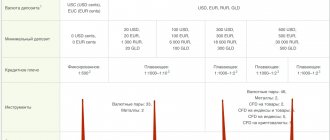The assessment of the value of intangible assets can be considered as a comprehensive assessment of the company's fixed assets, including intangible, capital assets and an assessment of the capitalization of the enterprise as a whole.
Assets, both tangible and intangible, have a specific value and market value. It is important to clearly understand all the factors affecting the company's capitalization.
In the context of the country's transition to an innovative path of development, the role of the institution of intellectual property (IP) is increasing, which should contribute to the production of knowledge-intensive, competitive products that ensure high rates of development and structural transformations in the economy.
The process of creating and using intellectual property requires effective management through the development of an integrated system for identifying, registering and managing IP objects.
Currently, every organization investing in the creation of new products and objects, engaged in innovative development, needs to create an intellectual property management system.
Intangible assets can be recognized as assets whose useful life exceeds 12 months, the value of which can be measured quite accurately. Assets must have characteristics that distinguish this object from others, including similar ones. Intangible assets do not have a physical form, can be used in the activities of the organization, and are capable of bringing economic benefits to the organization.
There are three criteria for measuring the value of intangible assets, succinctly formulated by the American economist Leonard Nakamura:
- as a financial result from investments in R&D, software, promotion of the company’s brand, etc.;
- as the costs of creating and developing the results of intellectual activity, purchasing licenses, etc.;
- from the point of view of increasing operating profit through the use of intangible assets.
Methods for estimating the value of intangible assets
The separation of intangible assets into an independent accounting object presupposes the mandatory resolution of issues regarding their valuation. According to IFRS (IAS 38 “Intangible Assets”), three well-known approaches can be applied to the valuation of intangible assets, as well as to the valuation of any asset:
Comparative (market) approach
This approach is based on the idea that a rational investor or buyer will not pay for a specific item of intangible assets more than the amount it would cost him to purchase another item of intangible assets with comparable utility (comparable quality). The comparative (market) approach to the valuation of intangible assets involves determining the value of an intangible asset received by an organization based on the price at which similar intangible assets are acquired in comparative circumstances.
If, when valuing an intangible asset, a sufficient number of analogues can be found, the value of its value obtained using this approach will be the most accurate in comparison with the values determined by other approaches, i.e. will have minimal error. This is the main advantage of the comparative (market) approach.
However, the use of a comparative (market) approach to evaluate intangible assets is difficult due to the fact that such objects are practically unrepeatable. There are objects, such as patents, trademarks or rights to works of art, for which it is simply impossible to find analogues. In addition, intangible assets are most often sold as part of a business; their separate sale occurs quite rarely.
Cost-effective approach
When applying the cost approach, the value of an intangible asset is determined based on the amount of costs for its creation or acquisition. The main advantage of the cost approach is the ease of obtaining initial data for calculating the value of intangible assets; in addition, all costs can be documented.
It should be noted that currently, in accordance with Russian accounting regulations (PBU), intangible assets are accepted for accounting at their actual (initial) cost, calculated on the basis of the cost approach. According to International Financial Reporting Standards (IFRS), this type of valuation is called cost.
The procedure for calculating the actual (initial) cost of intangible assets depends on the route of their receipt into the organization. As you know, intangible assets can enter an organization in various ways. Among them are the following:
- purchase for a fee;
- creation within the organization;
- exchange for other property;
- free receipt;
- making a contribution to the authorized capital;
- privatization of state and municipal property.
One of the disadvantages of the cost approach is the discrepancy between present costs and their future costs. Existing methods for assessing intangible assets within the cost approach do not fully take into account inflationary changes in the purchasing power of money, as well as the ability of money to generate income, provided they are wisely invested in alternative projects.
Income approach
Unlike the cost approach, the income approach allows you to evaluate the possible economic benefits that intangible assets can bring. In foreign practice, such benefits are usually called fair value.
Fair value is the price that would be received to sell an asset or paid to transfer a liability in an orderly transaction between market participants at the measurement date (IFRS 13 Fair Value Measurement).
In the economic literature, the issue of using fair value in domestic accounting practice as a type of valuation of accounting objects is currently the subject of debate. The arguments in favor of fair value accounting are that fair value provides a more objective basis for estimating future cash flows than the cost method, provides a basis for comparability of asset information, is best combined with active management principles and facilitates a more objective assessment of performance. management work.
One of the main disadvantages of fair value accounting is the significant difficulty in determining fair value in the absence of an active market. They entail another negative aspect associated with the use of fair value - high labor intensity and large additional costs caused by the need to attract professional appraisers.
Economists believe that a significant disadvantage of valuing assets at fair value is the impossibility of documenting this valuation in many cases and the likelihood of manipulation with valuations, which will not allow accounting to perform one of its main functions - control. As is known, the control function of accounting is performed only when reflecting accomplished facts of the organization’s economic activity. In addition, accounting information has legal force if it is supported by relevant documents.
It seems that fair value can be used in domestic practice, but not in current accounting, but when disclosing information in explanations to the main forms of financial statements. The information included in the explanations does not have to be generated in the accounting accounts; it can be determined by calculation. Consequently, it is possible to evaluate intangible assets at fair value determined on the basis of the income approach for the purposes of disclosing information about them in the financial statements.
A problematic issue that arises when assessing an organization's assets at fair value is the choice of an indicator that most reliably reflects this value.
There are many approaches to determining fair value, and therefore indicators that reflect it. For example, under certain conditions, fair value may be expressed by market value, replacement cost taking into account depreciation, discounted value and other types of values. In foreign practice, most often the best indicator of the fair value of an asset is its market value. However, these concepts are not equal.
Market value fully corresponds to the concept of fair value only in active market conditions, i.e. a market in which prices are determined by supply and demand, transactions are carried out quite often, without coercion, and the parties involved are independent of each other. Due to the specific nature of intangible assets, there is practically no active market for them.
As already noted, one measure of fair value may be present value. Using the discounting method to determine the fair value of an organization's assets has a number of advantages.
Firstly, the discounting method allows you to overcome fairness only at the time of the transaction. Secondly, its use takes into account the utility of the asset in terms of the future economic benefits associated with owning the asset. Thirdly, discounted value is less susceptible to fluctuations in market conditions, since it is based on factors that most fully take into account the possible characteristics of assets: cash flows generated by assets over time and all kinds of risks.
Cost of intangible assets
Today there is no data on the value of intellectual property, and the stock market is underdeveloped. Therefore, of the methods listed above, it is necessary to highlight the costly one. It allows you to study the cost of each component of an intangible asset, and then, by summing it up, determine its final price.
The procedure for assessing intellectual property objects includes several stages. First, the structure of intangible assets is analyzed and its components are determined. Then the elements are assessed individually and the most suitable method for analyzing the components is selected and calculations are made.
At the third stage, the degree of wear and tear of the components of the IP object is examined. Depreciation in this case means loss of usefulness and, accordingly, value. Thus, the evaluation of a patent takes into account obsolescence associated with the emergence of new, improved analogues of the patented invention.
At the end, the residual value of all parts of the intellectual property is calculated and its total assessment is made. The residual value of an intangible asset can be calculated by subtracting accumulated depreciation from its original cost.
By assessing the market value of intangible assets and other results of intellectual activity, the following tasks can be solved:
- increasing the company's capitalization;
- allocation of additional assets that have independent commercial interest;
- assessment of the amount of material damage resulting from the illegal use of intangible assets by third parties.
Intelligence and Energy
The assessment of intangible assets is of enormous importance for companies operating in any high-tech industry, for example, in the energy sector. In a highly competitive industry, only the unique nature of an enterprise's intellectual property can provide sufficiently strong and high barriers in the long term. This will make it possible to receive stable income in the market from the monopoly use of new technologies or the sale of patents and licenses.
The main problems of domestic companies operating in the energy market is the lack of a regulatory framework confirming the development, creation and use of intellectual property. The management of intellectual property of domestic energy enterprises, as a rule, is carried out by specialists who do not know the mechanisms of legal regulation to protect against unfair competition.
Creating an effective system for managing an enterprise's intellectual property can reduce innovation risks and facilitate the process of introducing innovative technologies to the energy market.
Of course, if an organization is well known and has already established a reputation through a long history in the market, the value of intellectual property may represent a significant portion of its total value.
However, we have to admit that the value of intellectual property is quite often underestimated in Russian business practice. Meanwhile, the skillful use of information about the real value of intangible assets can significantly strengthen the market position for a company of any size.
How to save money on appraisals
Prices for the services of professional appraisers are quite high. You are buying many days of labor from a highly qualified expert (or even more than one).
Remember that there is no quality appraisal at low prices. By contacting a cheap agency, you risk contacting scammers.
But you can save on the assessment if you use our tips.
Contact a reliable company
Remember that the stingy pays twice. There are cases when a certain authority refuses to accept the conclusion of the assessment of intangible assets, citing the fact that the document was drawn up with errors. And the owner of the intangible asset has to order the procedure for its evaluation again.
Get a free consultation
Quite a lot of companies offer advice on asset valuation for free. If the company you choose offers only paid consultations, you can use a trick: talk to an expert about the procedure in one place, and order it in another.
Order an express assessment
This is a simplified assessment method that costs much less. As a result, you do not get the exact value of the asset, but its range. This is quite enough to achieve some goals.
Features of assessing the value of intangible assets
The complexity of assessing intangible assets is primarily due to the complexity of quantifying the results of the commercial use of these assets that are at one or another stage of development, industrial development or use, due to the influence of a number of multidirectional factors.
Here we review methods for valuing intellectual property and discuss full ownership rights to it. But in practice, much more often it is necessary to determine the value of individual parts of property rights to use intellectual property, and a specific task arises of assessing the value of several license agreements.
The experience of Western countries shows that to estimate the value of such contracts, the method of standard royalty rates, such as the rate for the use of an IP object, can be used. The rate is calculated depending on the profitability of using a given object, as well as on the period of use of the intellectual property object, production volumes, costs of its creation, as well as a number of other factors. Basically, licensing rates are determined as a percentage of the unit price of the product produced through the use of the IP object, of net income, or of the sales amount of the patented product.
Economic effect
When assessing intellectual property, the most difficult task is to determine the economic effect of using an intangible asset. An important task is to determine the share of net income received specifically from the use of the asset being valued, for which factor analysis is usually used. For example, the use of an invention allows you to obtain net income by reducing production costs, increase the cost of products by improving their quality, increase sales volume, and reduce income taxes.
A serious difficulty in determining the value of intangible assets is that investment is required to introduce them into production. Part of the net income from the implementation of an investment project is the income from the use of the IP object. In this regard, it is necessary to first develop an investment project, draw up a business plan in which to calculate the expected net annual income. Then, highlight that part of the income that can be attributed to the intangible asset used.
In this case, the share coefficient is calculated taking into account the savings factor, and the use of some inventions allows you to reduce the amount of income tax.
When assessing intangible assets, an increased premium is determined for risk, since investments in these assets are highly risky. The use of intangible assets in the business turnover of a company allows you to optimize income tax. But first, it is necessary to carry out a competent assessment of the value of intangible assets; they must be placed on the company’s balance sheet as IP objects.
Valuation of a company's intangible assets is the determination of the value of five main types of intellectual property: copyright, trade secrets, industrial property, goodwill, and other (non-traditional) types of intellectual property.
When assessing the value of IP objects, it is necessary to take into account the objects included and not included in the balance sheet of the enterprise. For example, business reputation (goodwill) is not taken into account in the company's balance sheet. But this intangible asset must be taken into account when assessing the value of a business, since in some cases it can have a significant impact on the company’s capitalization.
General position
In the legislation of the Russian Federation, intangible assets can include rights used in economic functioning for a certain period exceeding one year and generating a certain income, arising from:
- copyright and other agreements for scientific inventions, works of art and literature, for software products, objects of related rights, databases and other similar things;
- patents for any inventions, enterprise designs, breeding achievements;
- certificates for certain utility models, as well as service marks and trademarks, or for licensing agreements for their direct use;
- official or commercial secret;
- rights to know-how and other similar things.
Among other things, intangible assets include:
- any organizational expenses;
- results of completion of R&D, including design and survey work;
- goodwill (in other words, the business reputation of enterprises).
Future Benefits
The traditional system of accounting for intangible assets and intellectual property in a company occurs in the same way as accounting for tangible assets. This leads to the fact that cash flows and profit flows based on accounting data distort the actual value of intangible assets and the company's capitalization. The cost of intangible assets plays an important role in determining the total value of an enterprise.
To create a full-fledged IP management system in an organization, it is necessary to bring the legal framework of the enterprise into compliance with the legislation of the Russian Federation in terms of accounting for intangible assets.
Intellectual property can bring significant economic benefits to a company in the future, for example, in the provision of services, in production, for management needs or in business activities.
Thus, an organization has the right to receive those economic benefits that intangible assets will bring to it in the future, if it has properly executed documents confirming the existence of the asset itself and the rights to it, and also has control over IP objects.
Effective management of intangible assets and their involvement in turnover is one of the conditions for increasing the competitiveness of an enterprise. Therefore, it is important to consider intellectual property not only from the point of view of its protection, but also from the point of view of assessing its practical market value.
What to consider when assessing intangible assets
By virtue of paragraph 2 of Part 3 of Art. 21 of the Accounting Law No. 402-FZ (hereinafter referred to as Law No. 402-FZ), acceptable methods for assessing intangible assets and intellectual property should be established by the corresponding federal accounting standard. And besides it, you need to be guided by the Accounting Regulations (PBU) (Clause 1, Article 30 of Law No. 402-FZ).
As a result, the assessment of intangible assets is regulated by PBU 14/2007 entitled “Accounting for intangible assets”. It was approved by order of the Ministry of Finance of Russia dated December 27, 2007 No. 153n. Its section II regulates the initial assessment of intangible assets, and section III – the subsequent one. In fact, these are the main types of assessment of intangible assets.
Also, by order of the Ministry of Economic Development of Russia dated June 22, 2015 No. 385, the Federal Valuation Standard “Valuation of Intangible Assets and Intellectual Property (FSO No. 11)” was approved.
According to the latest document, the main methods for estimating the value of intangible assets are as follows:
- profitable;
- expensive;
- comparative.








